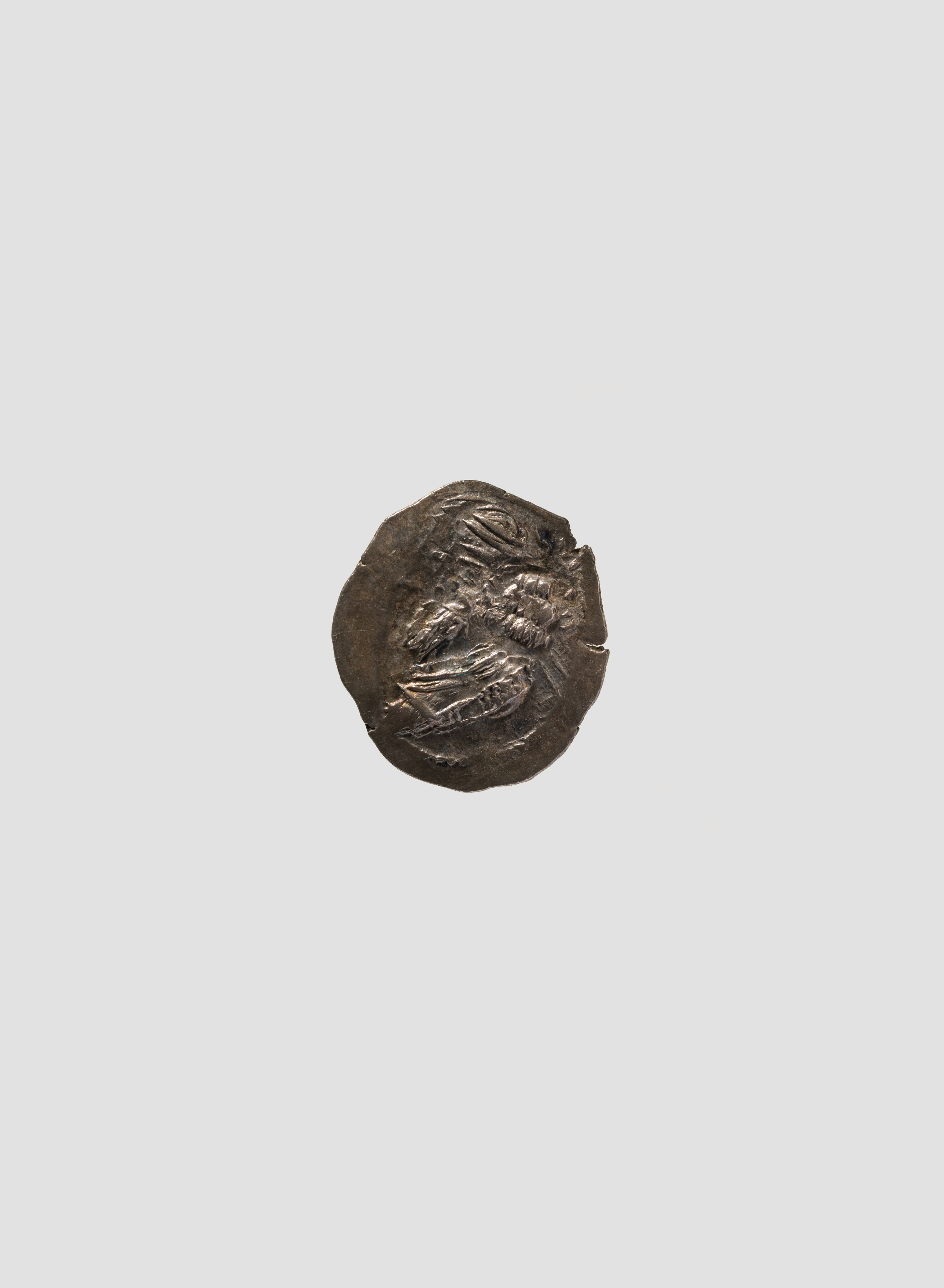Obol
Not on view
Numismatists – the scholars who study coins – refer to the ‘front’ side of the coin, which usually features the head of a person or god, as the ‘obverse,’ and the ‘back’ side as the ‘reverse.’
On the obverse of this small silver coin, a bust of the king faces to the left. He has a long beard, long hair, and a large nose, and wears a domed hat (called a ‘tiara’) with a diadem (the headband worn by victorious athletes in ancient Greece) tied over it. He also wears a necklace or torque around his neck. The design on the reverse is all but impossible to discern.
This coin was minted by King Pakor II of Persis, sometime in the first century CE. Persis, or Pars, refers to a region in southwestern Iran which had been the heartland of the Achaemenid Empire. Under the Seleucids and Parthians, Persis was ruled by client kings like Pakor, who combined elements of Achaemenid, Seleucid, and Parthian iconography on their coins. The diadem worn by Pakor, for example, is a common feature on images of Seleucid kings.
This coin was excavated at Qasr-i Abu Nasr, near Shiraz. Much of the material from the site dates to the Sasanian period (224-651); this coin is one the few objects suggesting it was occupied in the Parthian period as well.
Due to rights restrictions, this image cannot be enlarged, viewed at full screen, or downloaded.
This artwork is meant to be viewed from right to left. Scroll left to view more.



